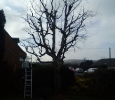Declining Balance Depreciation Method Explanation And Example
The SYD depreciation equation is more appropriate than the straight-line calculation if an asset loses value more quickly, or has a greater production capacity, during its earlier years. In the above example, we assumed a depreciation rate equal to twice the straight-line rate. For example, if the fixed asset management policy sets that only long-term asset that has value more than or equal to $500 should be recorded as a fixed one company purchases another in an acquisition asset.
- It is important to understand that although the charging of depreciation affects the net income (and therefore the amount attributable to shareholders) of a business, it does not involve the movement of cash.
- Its anticipated service life must be for more than one year and it must have a determinable useful life expectancy.
- As the declining balance depreciation uses the net book value in the calculation, the company doesn’t need to determine the depreciable cost like other depreciation methods.
- We may earn a commission when you click on a link or make a purchase through the links on our site.
The company can calculate declining balance depreciation for fixed assets with the formula of the net book value of fixed assets multiplying with the depreciation rate. A declining balance method accelerates depreciation so more of an asset’s value can be recorded earlier in its useful life. This method is most suitable for assets and equipment that can be expected to become useless and obsolete within a few years such as technology products. The sum-of-the-years’-digits method (SYD) accelerates depreciation as well but less aggressively than the declining balance method. Annual depreciation is derived using the total of the number of years of the asset’s useful life.
Methods of Depreciation
We may earn a commission when you click on a link or make a purchase through the links on our site. All of our content is based on objective analysis, and the opinions are our own. For the past 52 years, Harold Averkamp (CPA, MBA) hasworked as an accounting supervisor, manager, consultant, university instructor, and innovator in teaching accounting online. For the past 52 years, Harold Averkamp (CPA, MBA) has worked as an accounting supervisor, manager, consultant, university instructor, and innovator in teaching accounting online. Calculate the depreciation of the asset mentioned in the above examples for the 3rd year.
The rate of depreciation is defined according to the estimated pattern of an asset’s use over its useful life. The expense would be $270 in the first year, $189 in the second year, and $132 in the third year if an asset costing $1,000 with a salvage value of $100 and a 10-year life depreciates at 30% each year. The examples below demonstrate how the formula for each depreciation method would work and how the company would benefit. Financial accounting applications of declining balance are often linked to income tax regulations, which allow the taxpayer to compute the annual rate by applying a percentage multiplier to the straight-line rate. For the first period, the book value equals cost and for subsequent periods, it equals the difference between cost and accumulated depreciation. Depreciation calculations determine the portion of an asset’s cost that can be deducted in a given year.
Why You Can Trust Finance Strategists
In other words, the depreciation in the declining balance method will stop when the net book value of the fixed asset equals the salvage value. In this case, the management usually determines the depreciation rate in the declining balance method based on past experience as well as the type of business or industry and the manner that the fixed asset is used. With declining balance methods of depreciation, when the asset has a salvage value, the ending Net Book Value should be the salvage value.
In this case, the depreciation rate in the declining balance method can be determined by multiplying the straight-line rate by 2. For example, if the fixed asset’s useful life is 5 years, then the straight-line rate will be 20% per year. Likewise, the depreciation rate in declining balance depreciation will be 40% (20% x 2). Declining balance depreciation is the type of accelerated method of depreciation of fixed assets that results in a bigger amount of depreciation expense in the early year of fixed asset usage. In this case, the company can calculate decline balance depreciation after it determines the yearly depreciation rate and the net book value of the fixed asset.
Great! The Financial Professional Will Get Back To You Soon.
Declining balance depreciation allows companies to take larger deductions during the earlier years of an assets lifespan. Sum-of-the-years’ digits depreciation does the same thing but less aggressively. Finally, units of production depreciation takes an entirely different approach by using units produced by an asset to determine the asset’s value. The declining balance method is an accelerated depreciation system of recording larger depreciation expenses during the earlier years of an asset’s useful life. The system records smaller depreciation expenses during the asset’s later years.
It must be applied where an asset is expected to face technological obsolescence relatively quickly. The articles and research support materials available on this site are educational and are not intended to be investment or tax advice. All such information is provided solely for convenience purposes only and all users thereof should be guided accordingly. Note that the double-declining multiplier yields a depreciation expense for only four years.
For true and fair presentation of financial statements, matching principle requires us to match expenses with revenues. Declining-balance method achieves this by enabling us to charge more depreciation expense in earlier years and less in later years. Although any rate can be used, the straight-line rate is commonly used as a base to determine the depreciation rate for the declining balance method.
What are the advantages of the declining balance method?
Using the rate from the calculation above, the declining balance depreciation for each of the 4 years is as follows. This rate is applied to the asset’s remaining book value at the beginning of each year. Because twice the straight-line rate is consistency meaning generally used, this method is often referred to as double-declining balance depreciation.
They determine the annual charge by multiplying a percentage rate by the book value of the asset (not the depreciable basis) at the beginning of the year. Referring to Example 1, calculate the depreciation of the asset for the second year of its life. Accruing tax liabilities in accounting involves recognizing and recording taxes that a company owes but has not yet paid. We should have an Ending Net Book Value equal to the Salvage Value of $2,000. With other assets, we may find we would be taking more depreciation than we should.
Looking To Get Started?
Some companies may use the double-declining balance equation for more aggressive depreciation and early expense management. The true purpose of calculating a depreciation expense is to allow the business to set aside profits in order to be able to replace the fixed asset at the end of its useful life. When applying the double-declining balance method, the asset’s residual value is not initially subtracted from the asset’s acquisition cost to arrive at a depreciable cost. Employing the accelerated depreciation technique means there will be lesser taxable income in the earlier years of an asset’s life.
Its sale could portray a misleading picture of the company’s underlying health if the asset is still valuable. The “double” means 200% of the straight line rate of depreciation, while the “declining balance” refers to the asset’s book value or carrying value at the beginning of the accounting period. As seen in the formula of declining balance depreciation above, the company needs the deprecation rate in order to calculate the depreciation.
While the straight-line depreciation method is straight-forward and most popular, there are instances in which it is not the most appropriate method. Assets are usually more productive when they are new, and their productivity declines gradually due to wear and tear and technological obsolescence. Thus, in the early years of their useful life, assets generate more revenues.
Residual value is the estimated salvage value at the end of the useful life of the asset. A financial professional will offer guidance based on the information provided and offer a no-obligation call to better understand your situation. Someone on our team will connect you with a financial professional in our network holding the correct designation and expertise. Our goal is to deliver the most understandable and comprehensive explanations of financial topics using simple writing complemented by helpful graphics and animation videos. At Finance Strategists, we partner with financial experts to ensure the accuracy of our financial content. Finance Strategists has an advertising relationship with some of the companies included on this website.


